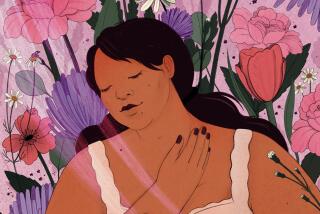An HIV Workshop Just for Women
- Share via
The seminar on how to live with HIV filled Pat Griffin with hope and determination,but it left her with one burning question: Where were all the women?
At next weekend’s Los Angeles Shanti Foundation seminar at the T.H.E. Clinic in the Crenshaw district, things will be different. For the second time in a year, Griffin has helped organize a workshop geared toward women who are living with the virus that causes AIDS.
“I got so much out of it, I started wondering why it couldn’t be done for women only,” Griffin, 41, said of a 1991 Shanti seminar that attracted few other women. “They had an hour presentation on women’s issues, but that wasn’t enough.”
After the seminar, Griffin approached Barbara Crofford, program manager of the nonprofit foundation, and began volunteering.
It wasn’t until October, however, that Griffin’s mission was accomplished: The foundation sponsored its first weekend seminar for HIV-positive women and their care-givers, “Women for Positive Living,” at the T.H.E. Clinic, 3860 W. Martin Luther King Jr. Blvd.
The two-day workshops provide women with more than strategies to maintain good health.
“People usually think in terms of medical intervention, but there’s a lot more,” said Crofford, who leads the workshop with Griffin. “This seminar is about the mind-body-immunology connection, and for women who may be struggling with self-esteem this is particularly important. We try to teach them how to have a higher quality of life overall.”
About 50 participants will hear discussions on the special needs of women: caring for children, practicing safe sex, asserting themselves with doctors and health care providers, and addressing gynecological problems. All of these can be difficult for women who are accustomed to being care-givers rather than caretakers and who often blame themselves for carrying and passing on the virus, Crofford said.
Perhaps the most important fact participants learn at the seminar, Griffin said, is that they are not alone. “We provide a safe place for women to talk to other women, probably for the first time,” she said. “We try to break the isolation, the stereotypes and stigmas attached to HIV and AIDS.”
In the spirit of creating a nurturing environment, the foundation offers participants free child care, meals and transportation. At the sessions’ end, women are given flowers, beauty products, candles and other gifts that reinforce a feeling of self-worth.
“We’re not trying to be Pollyanna, but neither is HIV a death certificate,” Crofford said. “Participants can look around and see that there are other women like themselves who are happy, satisfied, and saying: ‘Yes, I am HIV positive.’ ”
*
In fact, about one-fourth of the workshop volunteers, including Griffin, are HIV positive. T.H.E. Clinic itself houses the county’s largest support program for HIV-positive women. Griffin said that women, who constitute the fastest-growing group of documented AIDS cases, can’t find the workshop soon enough, particularly women of color.
“Black and Latina women make up only 19% of the population, but they’re accounting for 72% of all female AIDS cases,” she said. “Women are too often reluctant to do things for themselves. We have to change that.”
Information: (213) 295-5671.
Women and AIDS From 1981 through 1993, Los Angeles County recorded 23,630 AIDS cases, with women composing 4.9% of them, or 1,156. The county has reported 15,187 AIDS deaths in that span.
Ethnic Breakdown
Women’s cases from 1981 to 1993:
White (32%) African American (33%) Latino (32%) Native American (less than 1%) Unknown (less than 1%)
Rate of cases per 100,000 population in 1992: African American: 19 Latino: 7 White: 4 Asian/Native American: 1
Method ofTransmission
Female exposure to HIV in Los Angeles County*:
1985 Transfusion: 32% IV drug user: 25% Sex: 21% Hemophilia: 11% Undetermined: 11%
*
1993 Sex: 41% Undetermined: 30% IV drug user: 25% Transfusion: 4% Hemophilia: Less than 1% *Pediatric cases excluded SOURCE: Los Angeles County Department of Health Services
More to Read
Sign up for Essential California
The most important California stories and recommendations in your inbox every morning.
You may occasionally receive promotional content from the Los Angeles Times.













